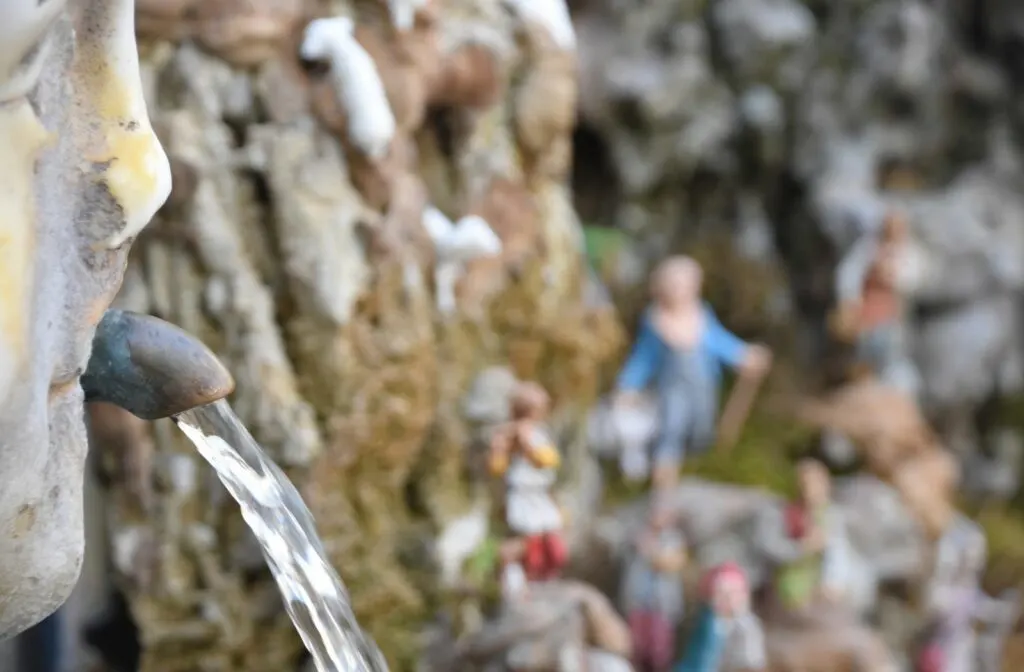This is a common question asked by tourists visiting Italy. Tap water in Italy is generally safe, and you can drink it, but is there anything else you should know? Let’s find out!
Water Sources In Italy

Springs and rivers are the primary sources of Italian tap water. Groundwater contributes to the water supply as well.
In Rome, for example, more than 90% of water is sourced from springs and rivers, and wells supply a tiny percentage of water.
Is It Necessary To Have A Water Filter In Italy?
Several reports of water contamination have been reported in certain regions of Italy. In Lazio for instance, unsafe levels of arsenic and fluoride in drinking water have been detected in the past.
You are a tourist, and you don’t want to take the risk of falling sick during your tour, so it would be best to get yourself a water filter that removes arsenic.
If you are a tea drinker, you will want filtered water, as making tea with tap water in Italy doesn’t make for a good cup of tea, but it’s all about your preference.
Treatment of Tap Water In Italy
Italy treats its tap water. The country has modern water treatment plants that adhere to the regulations set forth by the EU Water Framework Directive.
There’s chlorine in tap water everywhere in Italy – the minimum requirement of chlorine is 0.2 mg per litre.
But keep in mind that the amount of chlorine usage depends on the season and the region. This is the reason that tap water tastes different from region to region.
You might be interested in Amazing Places to include in your Italy Itinerary
Where To Find Tap Water In Italy
You’ll find many water fountains throughout Italy, and they provide free tap water, so make sure you always have a reusable water bottle when you are out sightseeing; it’s even better if it has a filter.
Tap water in Tuscany
Drinking tap water in Tuscany is perfectly safe. There are water fountains and taps. If the water isn’t drinkable, you’ll see a sign that reads Non Potabile.
Tap water in Rome
Rome has provided its citizens with drinkable water for the last 2,000 years. So yes, you can drink tap water in Rome, and there are numerous water fountains.
Tap water in Naples
There’s safe drinking water in Naples as well. If you are worried about metal impurities, you should get a water bottle with a filter; the only thing a good water filter won’t remove is taste.
Tap water in Milan
Tap water in Milan is generally safe to drink. The drinking water goes through several checks to make sure that it’s safe for both citizens and tourists.
However, keep in mind that water can taste a little strange because of all the protective chemicals.
There’s a concern that there’s E.coli in wells, so if the water is sourced from a well, you probably shouldn’t drink it, although locals drink this water as their bodies are accustomed to it and have developed immunity.
Tap water in Venice
There are water fountains in Venice as well, and the water is supplied by an aquifer on the mainland. Don’t worry about lagoon water, as taps and water fountains in Venice don’t bring lagoon water.
Also, there are wells that are as deep as 1,000 feet, and the quality of water sourced from wells is constantly monitored.
Tap Water Vs Bottled Water: Which Is Better?
This is your call, but we are going to give you facts.
Tourists feel safer drinking bottled water but the truth is that there isn’t a big difference between tap water and bottled water.
The minerals in bottled water and tap water are practically the same.
In fact, there isn’t any evidence to suggest that drinking bottled water is healthier. The best thing to do, in our opinion, is to get a reusable water bottle with a filter and fill it up. This will save you a lot of money.
Drinking hotel water
If you don’t want to drink from taps, you will be provided with bottled water by your hotel, but the water supplied by some hotels is actually tapped water.
Safety Tips
- Always check with your hotel to make sure the water in the area is drinkable.
- If the water has an unusual colour, avoid drinking it at all costs.

